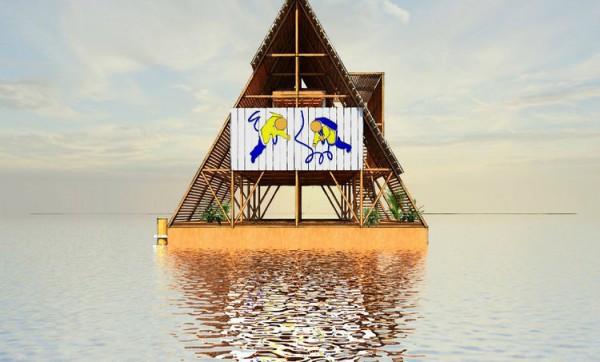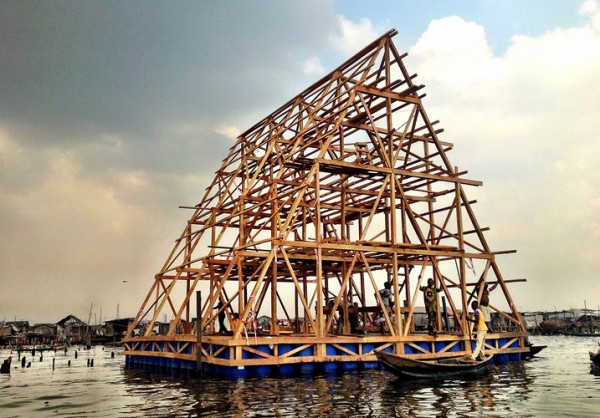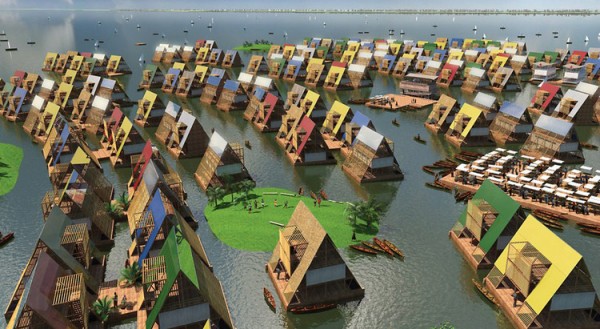At last night’s Academy Awards, a 9-year-old girl named Quvenzhané Wallis was nominated as Best Actress for her role as Hushpuppy, a young girl from the swamps of Louisiana with a justifiable fear that global warming and rising sea levels would engulf her waterlogged home. Sadly, Hollywood did not give Wallis the Oscar for her stunning, defiant performance, nor did it honor the film in which she starred, “Beasts of the Southern Wild,” with a Best Picture award.
Little Hushpuppy and Quvenzhané, however, might be buoyed to learn about the efforts of Nigerian architect Kunlé Adeyemi, who is trying to use green building techniques to prevent a similar aquatic catastrophe for children in Lagos, Nigeria, who live in makeshift communities along the water. With a plan to help the Makoko section of Lagos survive the chronic flooding in the area, he and NLE Architecture have created a sustainable floating school design that will ensure that children’s education can continue no matter how high the water rises.

Makoko is home to about 250,000 low- or no-income people living mostly in makeshift structures on stilts on the edge of Lagos. Instead of roads, most people are connected by canoe along shallow waterways. Adeyemi eventually wants to see the unstable stilt houses replaced with stronger ones that float freely on the surface and have better access to fuel, fresh water and sanitation services.

To start this ambitious project, he is building a 3-story, A-frame-style floating school that is 108 square feet at its base and made of 256 empty plastic drums. The wooden frame is made from trees that are all sourced locally. As Adeyemi is quoted as saying on Fast Company’s Co.Exist site, building on water is “certainly cheaper than building on land.”
Once completed, the building can accommodate up to 100 students, aged 4 to 12, and will produce its own electricity via roof-mounted solar panels. The school will also harvest rainwater in cisterns, which can be used for the structure’s toilets.

Eventually, Adeyemi sees an entire community of A-frame solar-powered houses connected together and immune from the vagaries of rising sea levels, not just in Lagos but across the crowded coast of West Africa.
“There are urban strategies for dealing with sea level rises and flooding that are more infrastructure-related. But this is about flood-prone areas within cities that we can use for urbanization,” he said in the Co.Exist article. “We hope to be a catalyst and that a lot of other people will adopt similar systems to address climate change and flooding.”
And if you haven’t yet seen “Beasts of the Southern Wild,” do yourself a favor and look for it in a theater near you, or at least put it in your Netflix queue. You probably won’t find a more beautiful work of cinematic art about the threat of rising sea levels, as seen through a child’s imagination.